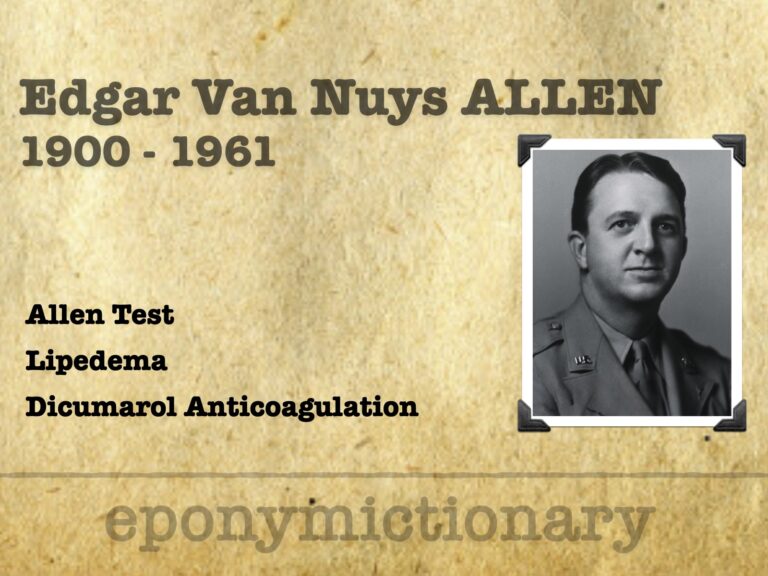
Edgar Van Nuys Allen
Pioneer of the Allen test and anticoagulant therapy, Edgar V. Allen (1900–1961) advanced vascular medicine with key insights into dicumarol use and lipedema

Pioneer of the Allen test and anticoagulant therapy, Edgar V. Allen (1900–1961) advanced vascular medicine with key insights into dicumarol use and lipedema

Allen Test: a bedside exam assessing hand arterial flow via radial/ulnar patency; used before ABG, cannulation, or radial artery harvest.
Josef Thurner (b. 1927), Austrian pathologist and co-eponym of May–Thurner syndrome; led pathology in Salzburg and published widely on venous disease.
Robert May (1912–1984), pioneer of scientific phlebology; co-described May–Thurner syndrome and the May perforating vein, advancing venous diagnostics.

Central catheter-related venous thrombosis is a common cause of upper limb DVT, particularly in patients with underlying malignancy.

Cervical artery dissections (CADs) involve the carotid or vertebral arteries and are a significant cause of stroke in young people. Internal carotid artery dissections are most common

Limb ischaemia is generally classified on the basis of its onset and severity, and may be complete, incomplete or irreversible

Lemierre syndrome is infective thrombophlebitis of the internal jugular vein caused primarily by anaerobic organisms from a focus of oropharyngeal infection

Abdominal Aortic Aneurysm (AAA) Surveillance Chart. All incidentally found aortic aneurysms should be referred to a vascular surgeon if the patient is a potential candidate for surgery.

Acute Aortic Dissection (AAD) is uncommon but highly lethal, requiring prompt recognition and management. Due to its non-specific clinical presentation, a high index of suspicion is necessary, particularly in high-risk patients.

The Aortic Dissection Detection Risk Score (ADD-RS) is a validated scoring system that helps stratify low to moderate risk patients who may have an aortic dissection.

Superficial venous thrombosis is rarely life-threatening. It carries a low risk of pulmonary embolism(1%), with concurrent DVT(~25%).